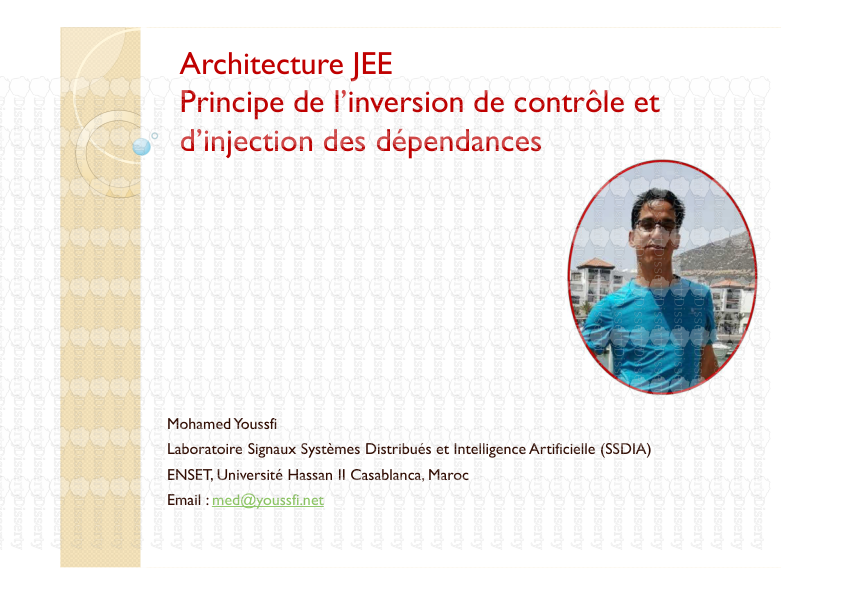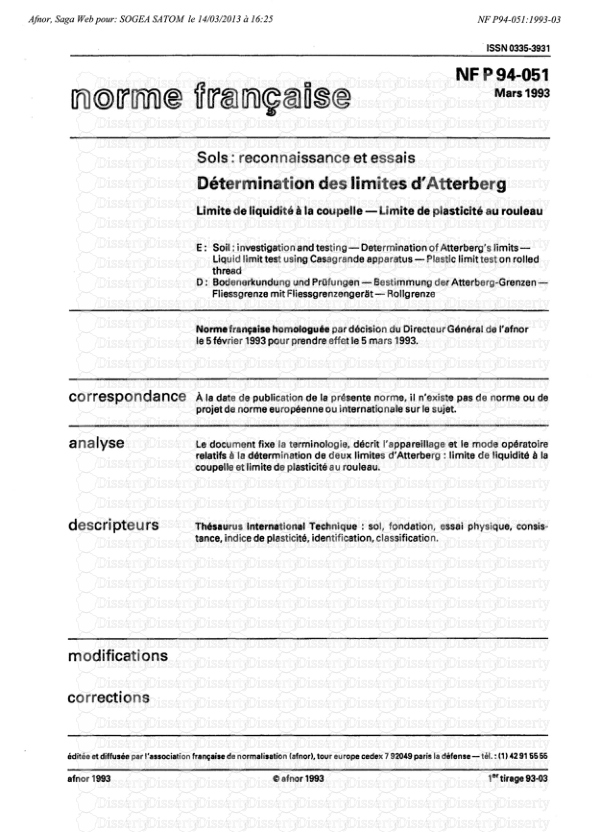1 B BIRD IRD® R RAIN AIN IMPACT SPRINKLER TROUBLESHOOTING GUIDE USE AND OPERATI
1 B BIRD IRD® R RAIN AIN IMPACT SPRINKLER TROUBLESHOOTING GUIDE USE AND OPERATION The diagrams below depict typical Rain Bird sprinklers with all available controls. Your particular model may have only some of these features. Diffuser screw: Breaks up the stream of water for more close-in watering. Shortens dis- tance of the stream (throw) up to 25% of total throw. Screw clockwise into the stream to produce misting and shorten throw. Turn counterclock- wise until totally out of stream for maximum distance (unadjusted throw). Distance control flap: Reduces length of the stream and redistributes water. Tilt downward into stream to deflect water. May be used in conjunction with diffuser screw for maximum throw reduction. Distance control dial: Some plastic models have a dial on top marked for minimum and maxi- mum distance. Turning the dial will cause modification of the stream of water and distance of throw as indicated on the dial. This feature serves the same purpose as the distance control flap found on other models. Arc Adjusters (Trip collar): Used to adjust degree of arc sprinkler will rotate. Position one arc ad- juster for each side of the desired arc. Several types of arc adjusters are available depending on the model of your sprinkler. Generally, plastic models move by just a push of the thumb. To adjust the metal models, pinch the ends of each metal adjuster together before sliding into posi- tion. Trip Pin: Used to determine part or full circle operation. Flip or bend the trip pin upward so it does not hit the trip collar for full circle operation. Pin should be downward for part circle operation (then slide arc adjusters into posi- tion to set degree of arc). 25PJDA P5-PJ Trip Pin Arc Adjusters Nozzle Diffuser Screw Diffuser Control Flap Diffuser Control Dial Customer Support Center 6640 S. Bonney Ave. Tucson, AZ 85706 1-800-RAIN-BIRD 2 IMPACT SPRINKLER TROUBLESHOOTING Through many years of experience, we have found that conditions which most often interfere with the proper operation of impact sprinklers are the use of any lubricants (other than water), low water pressure, foreign materials in the irrigation water, and excessive damage or wear to sprinkler parts. Any one or a combination of these factors can cause the sprinkler to stop rotating completely or ro- tate to one side and fail to return. If your sprinkler stops working: DON'T....Spray it with lubricant! DON'T....Drill out the nozzle! DO..........Disassemble and clean the unit thoroughly. DO..........Check for sources of reduction in water pressure. Problem Cause Remedy A. Sprinkler does not rotate back and forth. 1. Insufficient water pressure. Re- quirements vary from model to model. a. Remove sprinkler head and attach pressure gauge to riser. Check operat- ing pressure with line running. If pressure is low. check for breaks in the line or water running elsewhere which could drain pressure. Most popular mod- els need at least 25 psi at the last sprin- kler head, and should have an un- adjusted throw of at least 36'. b. Pop-up Models: Check for water coming out around the guide seal below the sprinkler head. This is a pressure activated seal. if pressure is insuffi- cient, water will leak around this seal causing the unit to stall and pop up only part way. If the unit is new or others on the line have same problem, it is probably related to pressure. If the unit is older, clean or replace the guide nut seal if necessary. c. Try switching with another sprinkler closer to water source. If it works, then pressure could be the problem. d. If the sprinkler stopped working within a month or two of installation, the system may not have been designed to accommodate the normal operating pressure of the type of sprinklers installed. If metal sprinklers are being used, try switching to plastic. If plastic sprinklers are being used, try a lower gallonage variety. e. If measures above do not provide enough pressure boost, system may have to be rerouted to include less sprinkler heads per line. A. Sprinkler does not rotate back and forth. 2. Debris in nozzle or other parts of sprinkler. Build up of water deposits causing friction. a. Remove sprinkler and check for debris in nozzle, swivel bearing, and inlet. Sometimes, a wire pushed gently into the nozzle will loosen debris so it can be rinsed out. Do not drill or alter nozzles as this may permanently hinder the sprinkler performance. Metal models only: If sand is caught in vane inside of nozzle, it will need to be removed. Loosen nozzle with wrench and unscrew. b. Thoroughly wash sprinkler to remove dirt and oil. A vinegar and water solution will help remove water deposits. c. Replace bearing washers if oil has been used on the sprinkler. Impact Sprinkler Troubleshooting Guide 3 Problem Cause Remedy 3. Worn or damaged parts. a. If arm or body of sprinkler is bent or damaged, replace sprinkler or part if available. b. Arm spring tension may need increasing. Metal models: Unhook spring from arm with needle-nosed pliers. Bend slightly to shorten and re-hook. Plastic Models: Unhook spring from arm with needle-nosed pliers, re-hook to next adjoining protrusion on arm. c. Replace bearing washers if less than 2/3 of original thickness, if mineral deposits are a problem, or if oil based products have been used. B. Sprinkler rotates to one side and stops. 1. Check points for non-rotation in Sec- tion A, 1-3. 2. Excessive water pressure. Just as each sprinkler has a lower pressure limit for proper oper- ation, there is also an upper limit. For most sprinklers the limit is 80 psi at the head. The optimum operating pressure is around 50 psi. Pressure that is too high will, at the worst, cause the sprinkler to stall, and at the least, cause the premature wear of the sprinkler parts. If the sprinkler rotates or reverses very fast, this a fore- warning of exces- sive pressure. a. Put more heads on your line or try making adjustments in the flow at the valve. In some cases, installing a pressure regulator ahead of your main shutoff valve is a good idea and will protect your entire system. Impact Sprinkler Troubleshooting Guide Continued 4 Impact Sprinkler Troubleshooting Guide Continued Problem Cause Remedy B. Sprinkler rotates to one side and stops. 3. Trip spring broken or other trip mechanism parts damaged. a. Metal models: Replace with trip assembly repair kit for your model. b. Plastic models: Only trip spring is replaceable. Call our toll free hotline for replacement springs. 1-800-RAIN-BIRD 4. Trip collar missing. a. Metal models: Replace with repair kit for your specific model. b. Plastic models: Call our toll free hotline for replacement plastic arc ad- justers. 1-800-RAIN-BIRD 5. Trip pin missing or not in downward position. a. Call our toll free hotline for replacement trip pins for most models. 1- 800-RAIN-BIRD 6. Pop-up models: debris in case. a. Check for debris or water in case which could restrict movement of sprinkler head. C. Special prob- lems with Pop Up sprinklers in cases (rotors). 1. Unit will not pop up or down. a. Check for insufficient water pressure to fully pop up unit or seal internal assembly. b. Remove dirt or debris from case which may be obstructing pop up/down action. c. Check that internal assembly is properly screwed into case. d. Rock or debris trapped in retract spring or spring is damaged. e. Remove internal assembly from case using wrench available for your model. Disassemble, inspect for damage or foreign materials, clean and reassemble. 2. Case fills up with wa- ter. a. Check as in Section C-1 a and c above. If water is coming out around seal. there may be dirt lodged between the seal and pop up shaft prevent- ing sealing, or seal may need replacing. b. Internal assembly may not be properly screwed into case. c. Case installed too low without sufficient gravel drainage below sprinkler. Try enlarging the drain holes with a screwdriver. d. Dense, clay soil may not allow swift drainage of sprinkler even with gravel drainage area. D. Water contin- ues to leak out of sprinkler when system is turned off. 1. This is not a problem with the sprinkler, but rather with one of the two points at right. a. Water continues to drain out of the lowest sprinkler head on the line for a period of time when system is shut off. The less the angle of slope and the longer the length of pipe, the longer it takes for all the water to drain. Consult your local Rain Bird contractor about sprinklers which contain a built-in check valve to prevent water in the pipe from draining out of the sprinkler head. b. Valve controlling sprinkler line is not shutting off all the way and allow- ing water to continue seeping through. If water continues to leak from the sprinkler head when area has not been watered within the last day, a faulty valve is most likely the cause. 5 uploads/Finance/ impact-guide.pdf
Documents similaires








-
40
-
0
-
0
Licence et utilisation
Gratuit pour un usage personnel Attribution requise- Détails
- Publié le Oct 17, 2021
- Catégorie Business / Finance
- Langue French
- Taille du fichier 0.1308MB


